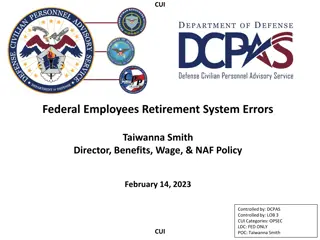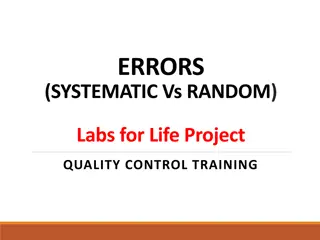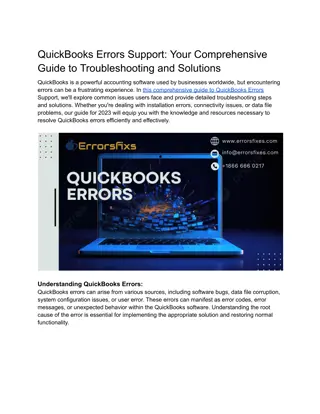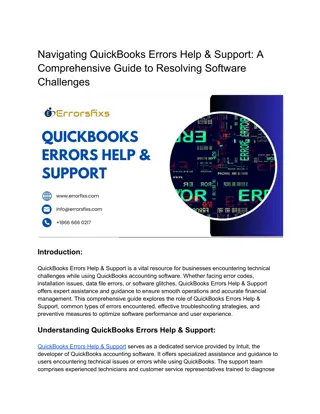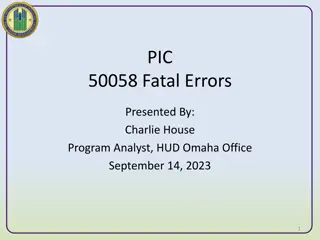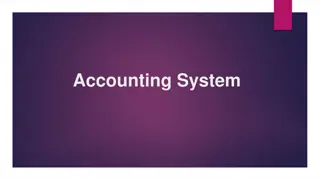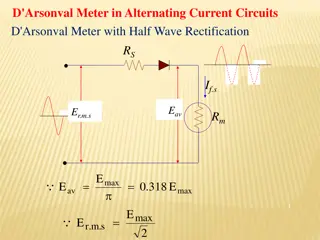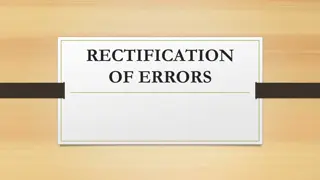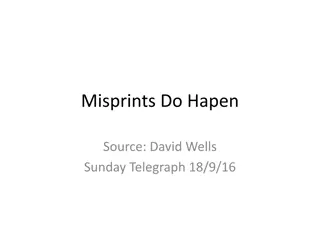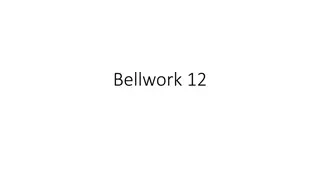
NETAJI NAGAR COLLEGE
Learn about the concept of errors in accounting, including different types like single-sided and double-sided errors. Explore how errors can impact trial balances and the necessary rectification methods. Understanding these concepts is crucial for maintaining accurate financial records.
Uploaded on | 1 Views
Download Presentation

Please find below an Image/Link to download the presentation.
The content on the website is provided AS IS for your information and personal use only. It may not be sold, licensed, or shared on other websites without obtaining consent from the author. If you encounter any issues during the download, it is possible that the publisher has removed the file from their server.
You are allowed to download the files provided on this website for personal or commercial use, subject to the condition that they are used lawfully. All files are the property of their respective owners.
The content on the website is provided AS IS for your information and personal use only. It may not be sold, licensed, or shared on other websites without obtaining consent from the author.
E N D
Presentation Transcript
1 NETAJI NAGAR COLLEGE NETAJI NAGAR COLLEGE B.COM 1STYEAR, 2018 DR. BISWAJIT BHADRA DR. BISWAJIT BHADRA
2 Rectification of Errors Rectification of Errors
ERRORS- THE CONCEPT 3 Errors accountant/book-keeper while recording transactions in the books of accounts. are unintentional mistakes made by the In the process of accounting, a trial balance is prepared which only reflects the arithmetical accuracy but does not guarantee the absence of any errors in the books . In such a case if trial balance agrees there may or may not be errors in the books but if trail balance does not agree it clearly indicates some kind of error(s) in the books of accounts.
TYPES OF ERRORS 4 On the basis of nature: ERRORS OF OMISSION [Total/Partial] ERRORS OF COMISSION [Amount/Account] ERRORS OF PRINCIPLE [Nature of expenditure] ERRORS OF MISPOSTING [Ledger] COMPENSATING ERRORS [Set off] On the basis of effects: One sided error More than one sided error [Two sided error]
SINGLE-SIDED ERRORS 5 All errors are not identified by the trail balance. Errors which are identified at the time of tallying the trial balance are SINGLE-SIDED ERRORS. These errors affect only one side of the accounts[either debit side or credit side] OR Both the debit and credit aspects of the accounts by different amounts. 1. 2.
SINGLE-SIDED ERRORS 6 These can be Errors of partial omission OR Errors of Commission: Errors of Casting Errors of Carry-forward Errors of posting to wrong account Errors of posting on wrong side of correct account Errors in balancing an account 1. 2. 3. 4. 5.
DOUBLE SIDED ERRORS 7 Errors which do not get identified by the trial balance usually affect both the debit as well as the credit aspects of the accounts by the same amount. So they are also referred to as DOUBLE SIDED ERRORS. Such an error can be rectified only by a rectification entry.
DOUBLE SIDED ERRORS 8 These can be Errors of total omission: Complete omission of recording Complete omission of posting Errors of Commission: Recording transaction in wrong book of accounts Incorrectly recording transaction in correct book of accounts 1. 2. 1. 2.
DOUBLE SIDED ERRORS 9 Errors of principle Errors of misposting Compensating errors
Rectification of Errors 10 The type of rectification entry to be passed depends on the stage at which error has been detected. The stages of error detection are Before the preparation of Trial Balance After the preparation of Trial Balance but before Final Accounts After the preparation of Final Accounts 1. 2. 3.
Before the preparation of Trial Balance 11 At this stage, the ledger accounts are not yet closed for the accounting period. So rectification at this stage is done by passing a Rectification Statement for any single sided error. For rectifying a double sided error a rectification entry may be passed involving personal, real or nominal accounts.
After the preparation of Trial Balance but before Final Accounts 12 At this stage, the ledger accounts are already closed for the accounting period. So while preparing trial balance if any error is detected, repetitive checking is done to identify the cause of such error. If the error cannot be identified even after such checking but the preparation of final accounts cannot be delayed further, the trial balance is tallied on a temporary basis with the help of Suspense Account.
Suspense Account 13 Existence of Suspense Account indicates the presence of some error in the books of accounts. Suspense Account arises when: Trial balance cannot be tallied Accountant is not sure of the accounting treatment of any particular transaction. 1. 2. Suspense A/c is a temporary measure which has to be disposed by identifying and rectifying the error.
After the preparation of Trial Balance but before Final Accounts- Rectification 14 Rectification of any error is done by passing a Rectification Entry. Rectification of single sided errors are done by passing rectification entries involving Suspense A/c. Rectification of double sided errors are done by passing rectification entries without involving Suspense A/c.
After the preparation of Final Accounts 15 At this stage, Final Accounts have been prepared. So all nominal accounts have been closed with a closing entry. Rectification of any Nominal Account is therefore done by replacing such nominal account with Profit & Loss Adjustment Account. Rectification of single sided errors are done by passing rectification entries involving Suspense A/c. Rectification of double sided errors are done by passing rectification entries without involving Suspense A/c.
Profit & Loss Adjustment Account 16 It is a special account that replaces nominal accounts if errors are rectified after preparation of Final Accounts. It is called so because adjustments of the nominal accounts results in the adjustment of profit/loss of the preceding period. The net balance of the P/L Adjustment A/c helps to know the correct profit/loss for the accounting period.
Effect on profit or loss 17 When any nominal account is debited in rectification entry- Profit decreases or loss increases When any nominal account is credited in rectification entry- Profit increases or loss decreases
EXAMPLES: Before Preparing The EXAMPLES: Before Preparing The Trial Balance Trial Balance 18 The following errors were committed by the Book-keeper. Rectify the errors assuming that they were detected before preparing the Trial Balance: Rs. 50000 paid for construction of new room was charged to office expense account. Building A/c .Dr. 50000 To Office Expense A/c 50000
Credit sale to Ram 5400 was posted to his account. 19 Ram Account will be debited to 5400 Purchase from Amir 6500 was entered in the Purchase Day Book as 5600. Purchase A/c .Dr. 900 To Amir A/c 900
Sales day book was overcast by 8200 20 Sales account will be debited by 8200 Wages paid for installation of a machine for 56000 wrongly debited to wages account. Machinery account Dr. To wages account 56000 56000
Commission payable to John 400 was wrongly recorded as Commission Receivable from him 21 Commission Receivable A/c Dr. 400 Commission Payable A/c Dr. To John A/c 400 800 A purchase of 8000 from Lama was passed through the Sales Day Book Purchase A/c ..Dr. Sales A/c .. To Lama A/c 8000 Dr. 8000 16000
Return Inward Book was cast short by 4500 22 Return Inward Account will be debited by 4500 Goods returned by Shyam 9300 was posted to his account from the Return Inward Book as 3900. Shyam account will be debited by 5400
EXAMPLES: After Preparing The EXAMPLES: After Preparing The Trial Balance Trial Balance 23 Purchase stationery 4500 was recorded as purchase of machinery Stationery A/c..Dr. 4500 To Machinery A/c Cash paid to Bose 30100 was posted in his account as 10300 Bose A/c Dr. 19800 To Suspense A/c 19800 4500
A purchase of 67100 had been posted to the debit of supplier as 61700 24 Suspense A/c Dr. To Creditor A/c 128800 (67100+61700) 128800 A cash sale of 7300 to Rupam correctly entered in the cash book, was posted to the debit of Rupam s personal account in the ledger. Suspense A/c Dr. To Sales A/c To Rupam A/c 14600 7300 7300
Purchase Day Book was overcast by 52300 25 Suspense A/c Dr. 52300 To Purchase A/c 52300 The purchase day book total 69600 had been posted as 66900 Purchase A/c Dr. To Suspense A/c 2700 2700
An item of purchase of 15100 was entered in the inward invoice book as 1500 and posted to the supplier s account as 5100 26 Purchase A/c Dr. To Creditor A/c To Suspense A/c 13600 [15100-1500] 10000 [15100 5100] 3600 Bills receivable from X of 100000 was posted to the credit of bills payable account and also credited to the account of X Bills Receivable A/c Dr. 100000 Bills Payable A/c . Dr. 100000 To Suspense A/c 200000
EXAMPLES: After Preparing The EXAMPLES: After Preparing The Final Accounts Final Accounts 27 Purchase stationery 4500 was recorded as purchase of machinery Profit & Loss Adjustment A/c..Dr. 4500 To Machinery A/c 4500 Cash paid to Bose 30100 was posted in his account as 10300 Bose A/c Dr. 19800 To Suspense A/c 19800
A purchase of 67100 had been posted to the debit of supplier as 61700 28 Suspense A/c Dr. To Creditor A/c 128800 (67100+61700) 128800 A cash sale of 7300 to Rupam correctly entered in the cash book, was posted to the debit of Rupam s personal account in the ledger. Suspense A/c Dr. 14600 To Profit & loss Adjustment A/c To Rupam A/c 7300 7300
Purchase Day Book was overcast by 52300 29 Suspense A/c Dr. 52300 To Profit & Loss Adjustment A/c 52300 The purchase day book total 69600 had been posted as 66900 Profit & Loss Adjustment A/c Dr. To Suspense A/c 2700 2700
An item of purchase of 15100 was entered in the inward invoice book as 1500 and posted to the supplier s account as 5100 30 Profit & Loss Adjustment A/c Dr. 13600 [15100-1500] To Creditor A/c To Suspense A/c 10000 [15100 5100] 3600 Bills receivable from X of 100000 was posted to the credit of bills payable account and also credited to the account of X Bills Receivable A/c Dr. 100000 Bills Payable A/c . Dr. 100000 To Suspense A/c 200000
31 Discount of 500 allowed to a debtor has been treated as discount received. The debtor s account has been correctly credited. Profit & Loss Adjustment A/c ..Dr. 1000 [ 500 X 2] To Suspense A/c 1000
32 THANK YOU THANK YOU

